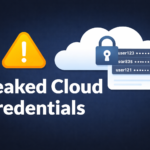Hackers exploit wevtutil.exe for LOLBAS attacks, enabling command execution, payload downloads, and persistence while bypassing security.
wevtutil.exe is a Windows tool for managing event logs, but attackers can misuse it to hide malicious activity or compromise system integrity. It allows exporting logs as XML, clearing logs selectively or completely, and querying logs with specific criteria. While useful for administrators, it can be exploited to steal data or cover tracks.

Attackers can misuse the tool in post-exploitation to clear, query, or export log data, making it harder to respond to incidents and aiding data theft.
Attackers exploit the wevtutil cl command to clear specific event logs, such as Application logs, to evade detection and hinder incident response efforts. By using a less commonly monitored utility compared to tools like PowerShell, attackers bypass traditional security measures.
To execute the command successfully and avoid ‘Access Denied’ errors, attackers must elevate their privileges to an administrative level through the command prompt. However, wevtutil lacks the capability to selectively clear individual events within a log—it can only clear entire logs.
While clearing Application logs can help attackers remain unnoticed, clearing the security log is riskier because it generates Event ID 1102, a clear indicator of tampering that can alert security teams.
Attackers can use the wevtutil qe command to export event logs in XML format, potentially leaking credentials or activity data. With elevated privileges, they can access more logs, while standard users are typically limited to application and system logs.
To prevent wevtutil.exe abuse in LOLBAS attacks, organizations should monitor activity, restrict event log access, and use behavioral analytics to detect suspicious patterns or tool combinations like wevtutil.exe, makecab.exe, and certutil.exe.
Follow Us on: Twitter, Instagram, Facebook to get the latest security news!













Leave A Comment